Are you looking for an easy way to keep your outdoor water faucet from being used by anyone other than yourself? Unwanted use of an outside water faucet can lead to various problems, such as wasted water and shattered pipes. Thankfully, it is easy and cheap to protect your hose bibs/faucets with a lockable ball valve.
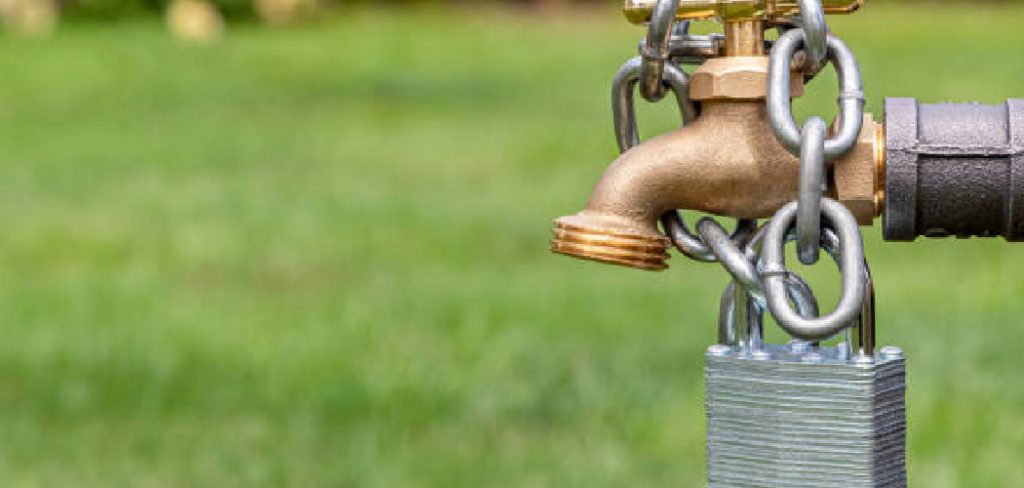
Here we’ll provide the know-how on what components are needed, how long it will take and step-by-step instructions on installing one of these devices – so you can make sure that no one will be able to access or alter your outdoor plumbing settings without permission!
This blog post has everything you need to know about how to lock an outside water faucet. From understanding why it’s important to prep and secure these fixtures before temperatures drop, to learning the steps necessary for locking a water faucet correctly, this post covers all you should know! Keep reading to get started today on preparing your outdoor plumbing connections.
Why is It Important to Lock an Outside Water Faucet?
1 . To Prevent Unauthorized Use
One of the most important reasons to lock an outside water faucet is to prevent unauthorized use. Unlocked faucets can be a temptation for children or strangers passing by, who may turn it on and leave it running. This not only wastes water but can also lead to high utility bills.
2 . To Conserve Water
By locking an outside water faucet, you can prevent water from being wasted. With the increasing concerns over water scarcity and drought in many parts of the world, it is essential to conserve every drop of water. By locking your faucet, you can ensure that no one accidentally or intentionally wastes this precious resource.
3 . To Protect Against Damage

Leaving an outside water faucet unlocked also puts it at risk of damage. Children playing with the faucet or animals chewing on it can cause leaks and other forms of damage, leading to costly repairs. By locking the faucet, you can prevent such accidents from happening.
4 . To Avoid Freezing Pipes
In colder climates, leaving an outside water faucet unlocked can lead to freezing pipes in the winter. This can cause significant damage to your plumbing system and result in expensive repairs. By locking the faucet, you can prevent water from sitting in the pipes and freezing.
5 . To Maintain Water Pressure
Another reason to lock your outside water faucet is to maintain proper water pressure. If the faucet is left on or partially open, it can lead to a decrease in water pressure throughout your home. This can affect the performance of appliances and make daily tasks like washing dishes or taking a shower more difficult.
6 . To Prevent Contamination
An unlocked outside water faucet can also be a source of contamination. If exposed to dirt, debris, or other contaminants, the water from the faucet may not be safe for consumption. By locking the faucet, you can ensure that only clean water is being used.
7 . To Secure Your Home
Finally, locking your outside water faucet can also help secure your home. Unlocked faucets can be used to fill buckets or other containers that can then be used to break into your home. By locking the faucet, you are preventing potential intruders from having easy access to water on your property.
How to Lock an Outside Water Faucet in 7 Easy Steps
Step 1: Gather the Necessary Materials
Before you can begin locking your outside water faucet, you will need a few materials:
- Padlock (with key or combination)
- Chain or heavy-duty wire
- Wrench
- Spray lubricant (optional)
Step 2: Locate the Shut-off Valve
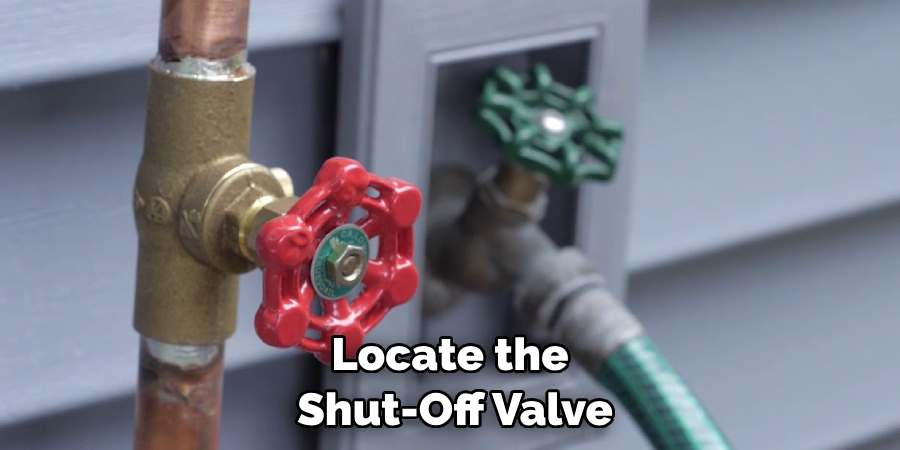
The first step is to locate the shut-off valve for your outside water faucet. This valve is typically found within your home, often in the basement or utility closet. Turn off the water supply to your outside faucet by shutting off this valve.
Step 3: Remove Any Attachments
Before you can secure your outside faucet, you’ll need to remove any attachments such as a hose or sprayer nozzle. Use a wrench to loosen and detach these attachments.
Step 4: Clean and Lubricate the Faucet
If your outside faucet is dirty or rusty, use a spray lubricant to clean and loosen any debris. This will ensure that the lock can be placed securely on the faucet. Also, make sure to dry the faucet thoroughly before proceeding.
Step 5: Wrap Chain or Wire Around the Faucet
Take a heavy-duty chain or wire and wrap it around your outside faucet in a tight manner. Make sure that there is not too much excess chain or wire as this can make it easier for someone to tamper with the lock.
Step 6: Secure the Lock
Once you have wrapped the chain or wire around the faucet, use your padlock to secure it in place. If you are using a combination lock, make sure to document or remember the combination so that you can easily remove the lock when needed.
Step 7: Test and Reattach Attachments
Test your lock by attempting to turn on the outside faucet. If the lock is secure, the faucet should not turn on. Once confirmed, reattach any attachments such as hoses or sprayer nozzles.
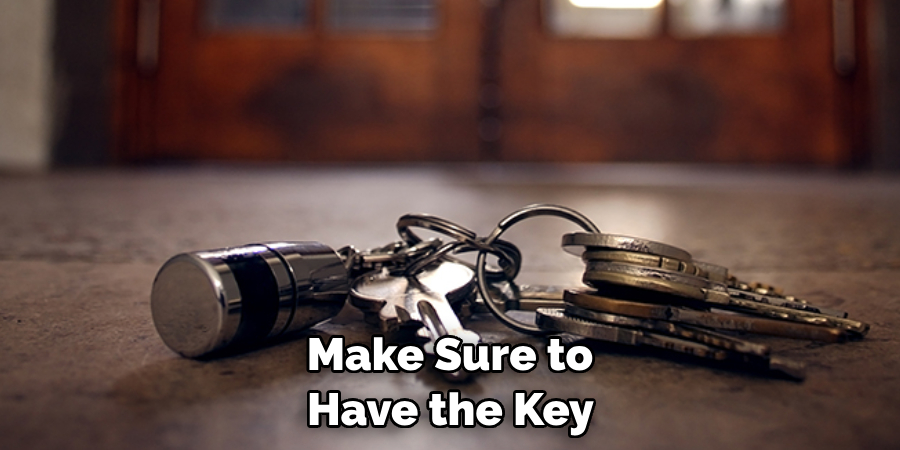
By following these 7 easy steps, you can easily and effectively lock your outside water faucet to prevent unauthorized use. Remember to always locate and turn off the shut-off valve before attempting to secure your faucet. And, if you ever need to remove the lock, make sure to have the key or combination on hand for easy access.
10 Additional Tips to Lock an Outside Water Faucet
1 . Do Not Forget About Other Outdoor Faucets
It’s important to remember that while you may focus on locking your main outside water faucet, there are likely other outdoor faucets around your property that also need to be secured. Be sure to check and secure those as well.
2 . Use Multiple Locks if Possible
If you have multiple outdoor faucets, it’s a good idea to use different types of locks on each one. This may make it more difficult for a potential thief to bypass all of the locks and access your water supply.
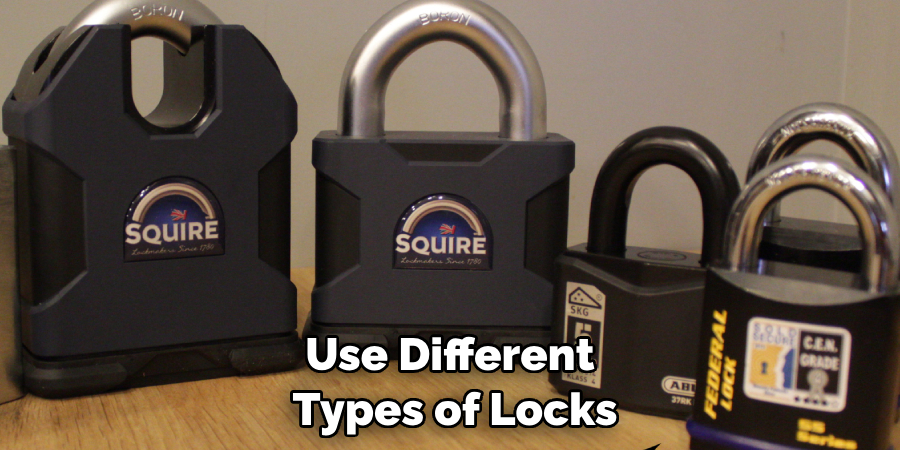
3 . Consider Installing a Motion-Activated Light
Installing a motion-activated light near your outdoor faucet can serve as both a deterrent for thieves and provide added security at night. The sudden burst of light may scare off potential intruders and make it easier for you to see if anyone is attempting to tamper with your faucet.
4 . Keep Your Yard Well-Maintained
A well-maintained yard can also serve as a deterrent for thieves. A clean, organized yard indicates that someone is actively taking care of the property and makes it less likely that they will attempt to steal from it.
5 . Inform Your Neighbors
Letting your neighbors know about the importance of locking outdoor faucets can help create a network of watchful eyes in your community. They may also be able to report any suspicious activity they see around your property.
6 . Invest in a Faucet Locking System
There are various faucet locking systems available on the market that are specifically designed to secure outdoor faucets. These can range from simple locks that fit over the handle to more advanced systems with combination codes.
7 . Utilize Tamper-Proof Covers
In addition to using a lock, you may also want to consider installing tamper-proof covers on your outdoor faucets. These covers require special tools to remove, making it more difficult for a thief to access the faucet.
8 . Regularly Check Your Faucets
It’s important to regularly check your outdoor faucets for any signs of tampering or damage. If you notice anything out of the ordinary, take immediate action to secure and repair the faucet as needed.
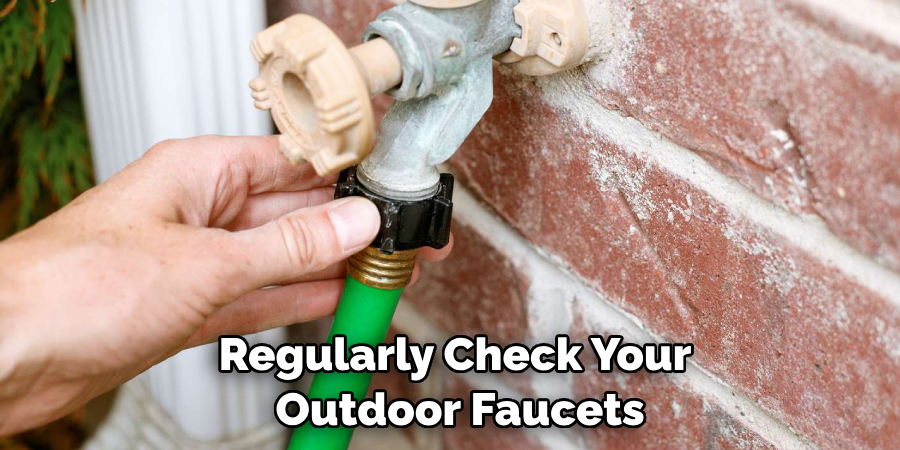
9 . Consider Installing Security Cameras
Installing security cameras in your yard can provide an extra layer of protection for your outdoor faucets. In addition to deterring potential thieves, the footage captured may also be useful if a theft does occur.
10 . Educate Your Family and Friends
Make sure all members of your household are aware of the importance of locking outdoor faucets and how to properly secure them. This may also extend to guests or visitors who may have access to your outdoor faucets. By educating others, you can help prevent potential theft and keep your water supply safe.
Frequently Asked Questions
What Precautions Should I Take When Locking an Outside Water Faucet?
When locking an outside water faucet, it is important to take certain precautions to ensure that the lock is effective and the faucet remains secure. Here are some things to keep in mind: Use a sturdy and durable lock: Make sure you choose a lock that is strong enough to withstand any attempts at tampering or forced entry.
Avoid using cheap or flimsy locks that can easily be broken. Choose the right location for the lock: It is important to place the lock in a spot that is not easily accessible to outsiders, but also not too hard for you to access when needed. Consider installing a lock box if necessary.
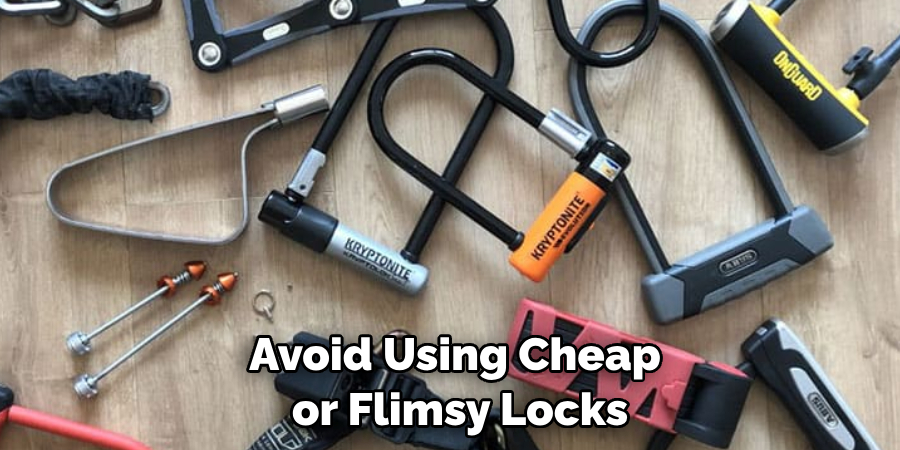
Regularly check and maintain the lock: Just like any other security measure, it is important to regularly check and maintain the lock on your outside water faucet. This will ensure that it remains in good working condition and continues to provide effective protection.
How Do I Know If My Outside Water Faucet Is Locked?
To check if your outside water faucet is locked, simply try turning the handle or knob. If it does not turn easily or at all, then it is likely locked. You can also visually inspect the faucet for any signs of a lock or security device installed.
Can I Use Any Type of Lock to Secure My Outside Water Faucet?
It is recommended to use a padlock specifically designed for outdoor use when securing your outside water faucet. These locks are typically weather-resistant and more durable against potential tampering. However, if you do not have access to a specialized lock, any sturdy and strong padlock should suffice.
Are There Any Other Methods for Securing an Outside Water Faucet?
In addition to using a lock, other methods can be used to secure an outside water faucet. These include installing an anti-siphon device or freeze-proof faucet. It is best to consult with a professional plumber for the most suitable option for your specific situation.
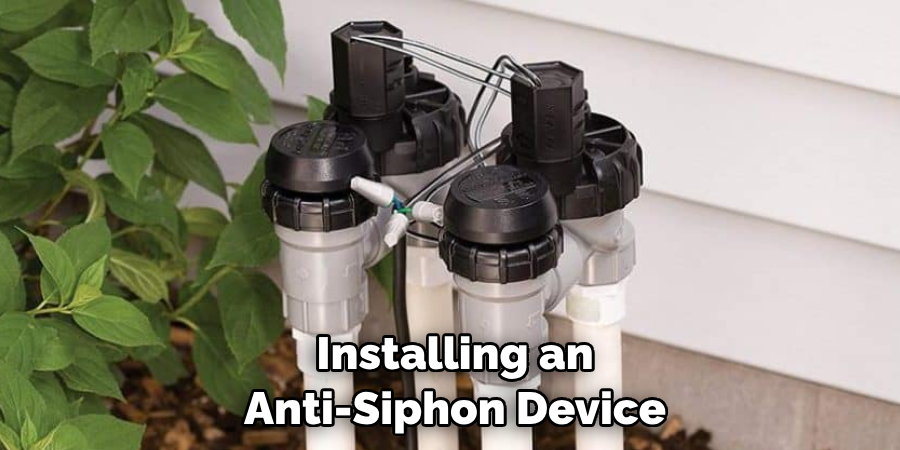
Should I Lock My Outside Water Faucet During Winter?
It is highly recommended to lock your outside water faucet during winter to prevent frozen pipes and potential damage. This is especially important if you live in an area with harsh winter weather.
Even if you have a freeze-proof faucet, it is still a good idea to add an extra layer of security by using a lock. So, it is important to take necessary precautions to protect your outside water faucet during the colder months. These precautions will not only prevent damage but also save you from costly repairs in the future.
Conclusion
In conclusion, locking an outside water faucet is important for the overall safety of your home and can be easily achieved by simply turning off the valve controlling the main water line.
You can also disable the faucet itself by using a hose bib lock, or winterize it to prevent it from freezing in colder climates. Regardless of what type of homeowner you are, having a properly locked outside water faucet is essential.
Now you know how to lock an outside water faucet! Knowing these steps will help ensure you never have to experience a plumbing nightmare due to an unlatched outdoor tap. Now that you know how to protect your property from unwanted use, grab yourself some tools and get out there! Lock your faucet with confidence today and make sure no one can misuse your precious tap.
About
Safety Fic is a distinguished figure in the world of Diy design, with a decade of expertise creating innovative and sustainable Diy solutions. His professional focus lies in merging traditional craftsmanship with modern manufacturing techniques, fostering designs that are both practical and environmentally conscious. As the author of diy, Safety Fic delves into the art and science of Safety Fic-making, inspiring artisans and industry professionals alike.
Education RMIT University
(Melbourne, Australia) Associate Degree in Design (Safety Fic) Focus on sustainable design, industry-driven projects, and practical craftsmanship. Gained hands-on experience with traditional and digital manufacturing tools, such as CAD and CNC software.
Nottingham Trent University
(United Kingdom) Bachelor’s in diyfastly.com and Product Design (Honors) Specialized in product design with a focus on blending creativity with production techniques. Participated in industry projects, working with companies like John Lewis and Vitsoe to gain real-world insights.
Publications and Impact
In diy, Safety Fic his insights on indoor design processes, materials, and strategies for efficient production. His writing bridges the gap between artisan knowledge and modern industry needs, making it a must-read for both budding designers and seasoned professionals.
